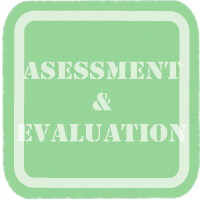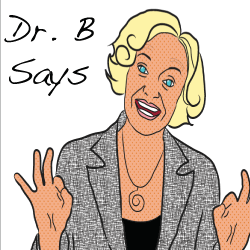 Reflection in the Language Classroom
Reflection in the Language Classroom
|
What is Reflection? How do we engage in active reflection?
In 1983 David Schön wrote the book The Reflective Practitioner in which he described his Reflective Practitioner Model and its approach to decision making and problem solving. He describes the difference between Reflection in Action and Reflection on Action and how the use of these practices could help to distinguish an effective practitioner from a less effective one. Teachers deal with people every day, which makes for an unpredictable day. Reflection is a useful method for a teacher to evaluate the day’s events and decisions; it also helps prepare a teacher for the unpredictable events to come.
 |
Watch the teacher in the video to learn more about active reflection. How does this teacher reflect IN and ON action? (0:54) |
back to top
What is Reflecting IN Action?
Reflection IN action describes the teacher’s ability to resolve situations while they are happening; it is done instinctively, while drawing on previous experiences. This reflection does not happen after the in class occurrence, rather the teacher tries out several solutions till the most appropriate solution is found. It involves a mixture of knowing and doing; Schön described this as ‘theory-in-use’.
What is Reflecting ON Action?
Reflection ON action takes place after the event has taken place. This involves developing a repertoire of experience and forces teachers to think about what they would ideally do if the situation happened again.
Schön believes that both types of Reflection are necessary to become an effective practitioner. Reflecting on one’s strengths and weaknesses helps in teacher development.
Some Strategies to help with Daily Reflection
DAILY REFLECTIONS have five major roles. They:
- act as a record or diary of things that were done each day
- give PROGRAM leaders and assistants feedback about the relative success of an activity is
- give participants an opportunity to ask questions, seek clarity, express concerns: Which activities did you like and why? Which ones did you not like and why? Do you have any questions about the activities?
- give participants an opportunity to practice their writing skills
- develop and increase metacognitive awareness in participants
Here are some possible question that can be used during daily reflections:
What were my strengths/weaknesses?
How have I improved? What can I continue to work on?
How do I feel about my lesson? Why?
How effective was the pacing of my lesson?
How much of a chance did the students have to speak?
How much circulation did I do in the class?
What did I notice in the class?
What would I do next time?
back to top
How can students be involved in reflection?
Though reflection is an important process for teachers and student teachers, it should also be encouraged for the students. Just as teachers grow and develop, so do students and they can only benefit from noticing their development. Many teachers do not know, however, how best to involve students in the process of reflection. Here are some tips:
- Give the students opportunities to reflect in different ways, whether it be in writing or out loud. Different materials can also be used to facilitate reflection and keep the students engaged; some students enjoy journaling, some might prefer interviews, and some might prefer blogging. Don’t be afraid to use technology!
- Give the students support and direction for their reflection. Simply asking them to reflect will not be enough for all students; guiding questions or introductory sentences can be used to direct the students who need the direction. (ie. Today what I liked was… or What did you like today? What helped me learn was… or What helped you learn today?
- Make reflection a regular occurrence. The more the students take part in reflection, the easier and more natural it will become for them.
- Keep the students’ reflections in a portfolio; this way the students will be able to look back on their own reflections to see how much they’ve grown, learned, and how much they were able to write about their learning!
- Let the students know why they are reflecting and that it isn’t a purposeless activity. These reflections help you improve as a teacher, and help them improve as learners; once students know how they learn best, then learning will become easier!
back to top

High Tech Reflection Strategies Make Learning Stick by Suzie Boss
http://www.edutopia.org/student-reflection-blogs-journals-technology
Becoming a Reflective Practitioner
http://www.education.umd.edu/teacher_education/sthandbook/reflection.html
Dr. Olenka Bilash: Reflection – a key to professional growth


 Teachers learn much about teaching by doing. They constantly think about what was successful about their lessons and what needed to be improved. They think about their students – the ones who are learning well and the ones who seem to be having difficulty. They constantly think about the issues in society and how they will get them across to their students. They constantly think about the values, beliefs and traditions that they want to pass on to their students. This type of thinking is called REFLECTION. Like looking into a mirror, a reflection is something that allows teachers to look at themselves and decide to accept what they have done or change it.
Teachers learn much about teaching by doing. They constantly think about what was successful about their lessons and what needed to be improved. They think about their students – the ones who are learning well and the ones who seem to be having difficulty. They constantly think about the issues in society and how they will get them across to their students. They constantly think about the values, beliefs and traditions that they want to pass on to their students. This type of thinking is called REFLECTION. Like looking into a mirror, a reflection is something that allows teachers to look at themselves and decide to accept what they have done or change it.
